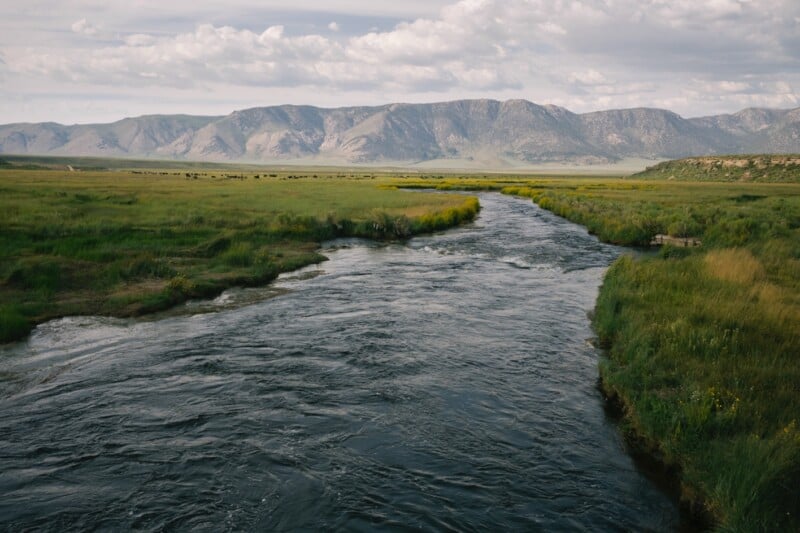Transitioning from Film to Digital as a Leica M Photographer
Film prices have been on the rise, it’s no secret. For some, the prices they are reaching can still be seen as justifiable. But for many others, it isn’t always that simple.
Just a few years ago, 35mm color film was easy to find, and it was relatively affordable. 2022 saw a couple of price increases from Kodak, and we have already experienced one large 15%-25% price hike this past March on all the brand’s film stocks.
This has caused some of those who rely on film to make their images to reconsider the medium, especially when you add the cost of development and scanning if they are not doing it themselves. In the end, photographers shooting color negative film could be looking at $25-$35 for just 36 exposures.
While some film photographers might look the other way in regard to these high prices, others are moving to black-and-white and/or developing at home to save some money. But ultimately, a lot of film users seem to be at the very least considering digital as an alternative, or even a supplemental way to still shoot when they don’t want to blow through precious film.

As a film Leica M shooter myself, I felt a bit trapped when these prices began to rise. I love the analog process of developing, scanning, and especially darkroom printing. So, it took some time to rethink my photographic approach.
That is when I decided to pick up a used Leica M10 in hopes that the shooting experience would remain consistent with what I was used to with my M6, and previous M4. This was some time last year when the prices began to come down a bit on the secondhand market after the release of the M11. Keep in mind, this is now a nearly seven-year-old camera that can still be found used for less than the price of their new 35mm film options.
Leica does not release new cameras often. Because of this, I figured it was the perfect time to jump into the digital M system as most of the camera’s depreciation had already occurred.
Is It Like Shooting a Film M?
The Leica M10, and I would imagine the M11 as well, is the closest I have felt to shooting film with a digital camera by far. In the past, I have owned Fujifilm X-Pro cameras, and while the images these cameras produce are great, their operation is nothing like that of a real rangefinder film camera.
Most modern digital cameras feel more like you are controlling a spaceship than using a camera. Their buttons are littered across every inch of the body, leaving you struggling to find a grip that doesn’t change your autofocus setting.
The digital Leica M cameras abandon all of that. The M10 has three buttons on the left of the rear screen, a directional selector on the right, and a customizable scroll wheel. That, and of course a viewfinder, is all it has on the back of the body.
This keeps the camera as simple as possible. As we all know, a film M camera has one button – the shutter release. Other than that, some models will have an ISO selector for the light meter or a self-timer switch, but that is it.
Because of this, when I am out shooting, I operate each in a nearly identical manner. Of course, some things will never truly be interchangeable between both film and digital; like a functional film advance lever (emphasis on functional, I’m looking at you, Leica M10-D). Yet, you won’t ever miss a shot with an M10 because you ran out of film, and the experience of shooting it is nearly identical to that of the fully mechanical film M’s in my opinion.
Body Design
Pair the simple button design with the size of the body that just about mirrors my M6, and the two almost feel interchangeable. The M10 is equal in terms of width and thickness to the classic film bodies, but just a touch taller.
This size factor makes the biggest difference to me. Having two bodies that feel identical in your hand makes switching back and forth between film and digital seamless.
Another appreciated aspect of the M10’s design that I enjoy is the ISO dial. I have read complaints about its function being a bit awkward to operate, but I have not had the same experience. Personally, I admire Leica’s choice to put the ISO selector where the film rewind knob was.
Coming from film, I don’t switch between ISO often, so I’m usually not fussing with it much. But I always prefer a manual dial over a menu or scroll wheel. Being able to glance down and check what ISO I’m at is a big reason for this.
The dial also has an ‘M’ mode that allows the user to select their ISO through the menu if the dial isn’t your thing.
Viewfinder
The M10’s viewfinder is also the best I have ever used. I know people who love the 50mm focal length are big fans of the M3’s viewfinder, but as a 35mm user, I have never used it. That said, the M10 has a larger, and brighter viewfinder than what is found in an M4 or M6.
However, I will add that the M10’s framelines are not illuminated by ambient light like its film predecessors. Instead, they are electronically projected and sometimes I find that they are not quite as bright as the framelines in an M6 when shooting in heavy sunlight. Though this has never proven to be a real issue while using the camera, I do think Leica could have made them a bit brighter.

Image Quality
The M10 boasts a modest, by today’s standards, 24-megapixel, full-frame CMOS sensor. Those wanting a bit more resolution can opt for the M10-R variant for its 40-megapixel sensor, or even the newer M11 that implements its own unique triple-resolution, 60-megapixel sensor.
However, I personally do not have any need for a camera with more than 24 MP. I print my photos often up to 20 inches wide and have never seen anything that has made me really wish for more resolution.
Sure, cropping is nice sometimes, but you also need to remember that cropping is not the same as switching lenses. When you crop a 35mm focal length image to what would be captured by a 90mm lens, you do not get any of the compression or depth of field that comes with a longer focal length. The two are actually far more different than people seem to think.
Again, coming from film, you will be hard-pressed to find anything wrong with the images coming out of the camera. The sensor has a wonderful color rendition and an impressive dynamic range. The .dng files are also very easy to work with, meaning colors are simple to adjust to your liking.

Especially when you pair the M10 with any of Leica’s incredible M-mount lenses, the image quality is what I would consider to be incredible.
Lens choice also lets you retain some character in your images, just as film would. If you like that dreamy bokeh, grab an old 50mm Summicron or even Summilux and you’d be surprised how much of a ‘film effect’ that can give a digital image.
Cost
Yes, digital M cameras are quite an expensive way to justify shooting less film. I’m not going to say it’s cheap by any means, but the ability to use the same lenses with a nearly identical shooting experience cannot come from any other digital camera system.
Sure, you can adapt your M-mount glass onto any mirrorless digital camera, but then you are losing the rangefinder shooting style.
Another argument to justify its high price is something I touched on a bit earlier. Because it will most likely be another several years before Leica releases its next iteration of the M lineup, the price of the M10 on the used market will probably stay consistent if you need to resell the camera.
This is something that I told myself when deciding to pick one up, but after using it so much over the last year and a half, I have no plans on selling it.
Who is the M10 For?
Most photographers laugh at Leica’s current line of cameras these days, and while that is a bit disappointing to the few who understand their importance in the market, it is a bit understandable.
As the industry overflows with cameras capable of lightning-fast autofocus and high frames-per-second shooting with over 50 megapixels, a simple yet functional camera like the Leica M system is a welcome breath of fresh air to those who enjoy the simple side of photography.
Is digital ever going to be 100% identical to film? No, however, while the look and of course their respective processes are very different, I do not think there will ever be a clear answer as to which is best. They are just that – different.

That said, Leica absolutely hit it out of the park with the M10 in terms of replicating their film shooting experience with their digital M system. By mimicking the film body’s size and shape, its easy-to-use ergonomics, incredible image quality, and cross-compatible lenses, there is no other camera system on the market that comes close.
I will of course continue to shoot film through my M6, however since adding the M10 to my kit, film will be designated for specific projects. When the film process and look are important, I’ll pick it up. But when it isn’t, the M10 makes photography simple again like it was before camera companies fought to put out new cameras every year.
Whether you are a film shooter looking to get into digital, or just someone wanting to get away from the spaceship-like digital camera ecosystem, the Leica M10 is a top contender in its field. And it’s one that can still be had for a relatively good price when compared to their newest line of cameras.
Image credits: Photographs by Trevor Anderson
Source link
